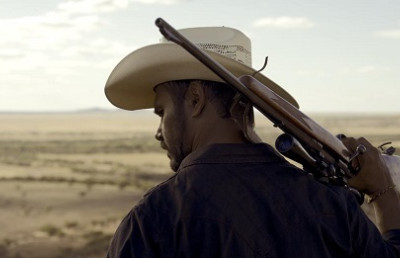Exterminate all the Brutes (Raoul Peck, 2021) & Speakers for the Dead (David Sutherland & Jennifer Holness, 2000)
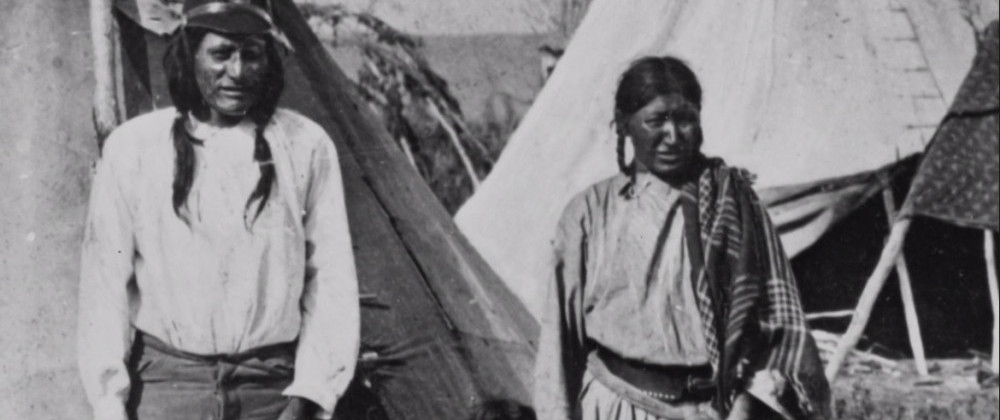
The Haitian-born filmmaker Raoul Peck has followed up his remarkable I am not a Negro (2016) with an arguably more impressive (at least more sprawling, more epic) documentary for HBO, Exterminate all the Brutes (2021). The title of the 2016 film comes as a defiant F-you to post-slavery racism and echoes lines said by James Baldwin in archival footage from the film. The line of the subsequent film comes from the same titled book by Peck’s writer friend Sven Lindqvist, which he took from a passage from Joseph Conrad’s colonial critique novella In the Heart of Darkness. Just as I am not Your Negro was inspired by Baldwin’s three friends Martin Luther King, Malcolm X and Medgar Evers (who form the unfinished novel-memoir Remember This House), Exterminate all the Brutes is largely based on the critical-historical work of three writers and friends of Peck, Sven Lindqvist (author of Exterminate All The Brutes), Michel-Rolph Trouillot (author of Silencing the Past: Power and the Production of History) and Roxanne Dunbar-Ortiz (author of An Indigenous Peoples’ History of the United States). I am not a Negro is largely bound by the writing and thoughts of the remarkable James Baldwin, whose ‘presence’ is represented in the film through his appearance in archival footage, on-screen text, and his writing interpreted brilliantly by the voice-over work of Samuel L. Jackson (no Tarantino profanities here). Director Peck’s own voice is largely subsumed. Peck knows the power and brilliance of Baldwin’s written and oratorial skills, so does well to rescind into the background. Though Peck’s ‘voice’ is still felt in subtle (and at times less subtle) ways; mostly in the continual layering of the Past (Baldwin, his three contemporaries, the Civil Rights movement, etc.) with the post-BLM Present. Here it is Peck the Kuleshovian montagist that comes to the fore. Like the jaw-dropping eye-line dissolve from a dreamy glamour close-up of Doris Day from the romantic comedy Lover Come Back (1961) to a photograph of the 1911 lynching of Laura Nelson (apparently the only extant photo of a lynched black woman). Peck establishes a continual dialogue between Baldwin’s lifetime and the present day United States, tying present day social ills pertaining to racism, power inequities, and poverty to the past and the unfinished work of the Civil Rights Movement: that anti-black racism is still a problem in America; that capitalism, especially in the South, was built on cheap or free labor; that black leaders (or any perceived socially left leaning leaders) who threaten the white status quo and/or capitalism, are suppressed, or die (Medgar Evers, Martin Luther King, Malcolm X, JFK, Robert Kennedy).
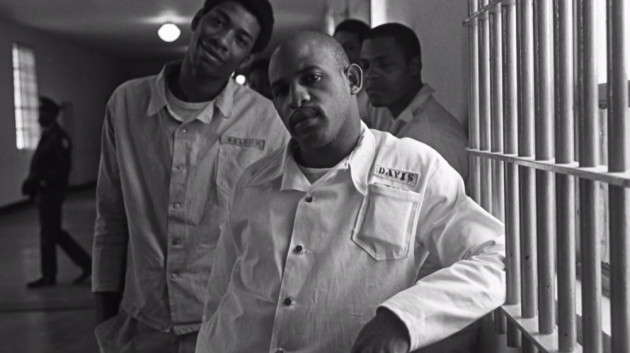
While I am not your Negro is focused on Baldwin, Exterminate all the Brutes is epic, taking on no less than over 1000 years of world history and how the narratives around Nation building have been shaped by the victors, encapsulated by Part 1: The Disturbing Comfort of Arrogance. Taking over from Samuel L. Jackson in I am not your Negro, Peck does his own voice-over here, which makes this film far more personal that the Baldwin documentary. A passage from Part 1 reverberates across the whole 4-part documentary: “There are three words that summarize the whole history of civilization: civilization, colonization and extermination. These words run forcibly throughout world history the same way they drill to the core of US history.” Peck traces the lineage of white supremacy and the colonial mentality from the Crusades (10th Century) onwards to Europe and North America. Each of the four episode titles go a long way to defining the content. To the title of part 1 “The Disturbing Comfort of Arrogance,” could be also added “or the Convenience of Ignorance.” Peck explores how some leaders live in blind ignorance of the past, of facts. Like American politicians who said that there was “nothing here” when they arrived on the shores of North America. The Vikings arrived in North American long before Christopher Columbus, landing on Newfoundland circa 1021 AD. According to archeologists “ L’Anse aux Meadows, [is] a Unesco world heritage site on the northernmost tip of the island of Newfoundland, is the first and only known site established by Vikings in North America and the earliest evidence of European settlement in the New World. (BBC.). Even Nicolas Winding Refn’s hallucinogenic Viking ‘Western’ Valhalla Rising acknowledges this.
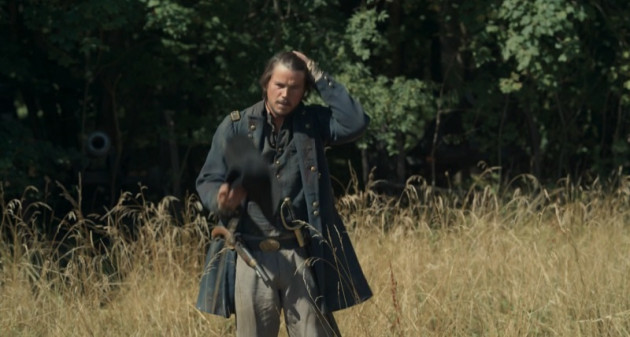
Josh Hartnett as the ubiquitous ‘white man’
In Part 1 we see the first appearance of a military figure played by actor Josh Hartnett, who visits a Seminole village and gives the female Seminole leader an ultimatum to move off their land into a government reservation, or face the consequences. The Seminole leader convenes with her community and gives the black slaves who they have taken in as ‘family’ the chance to run away, but the slaves stay and fight together, seeing in the American invaders a common foe. Here Peck uses a fictional device to establish a political kinship between the black slaves and the Indigenous peoples, a connection which Peck comes back to throughout the film, culminating in Part 4 where post-Colonial Indigenous Natives and Post-Slavery Blacks are united in their ongoing quest for self-representation (in art, politics) and self-determination (in law, governance). In part 1 we then learn that the word genocide was invented in 1944 by Raphael Lemkin “as a hybrid combination of the Ancient Greek word γένος (génos) ‘race, people’ with the Latin caedere, ‘to kill’” in response to Nazi policies.” The follow-up parts are: Part 2: Who the Fuck is Columbus? We have been living here for centuries. Why do you want to rob this from us? Part 3: Killing at a Distance, or How I enjoyed the Outing. Part 4: The Bright Colors of Fascism.
Peck uses several techniques to keep the past and present in continual dialogue, as he did in I am not your Negro, by intercutting between events during the Civil Rights Movement of the 1950s and 1960s and contemporary events around the Black Lives Matter movement. Peck hired a recognizable name actor to help the promotional and marketing side of I am not your Negro, with the voice work of Samuel L. Jackson. Likewise he hired Josh Hartnett to play a sort of universal white man as arrogant social body proxy killer, doing the dirty work of governments across time. Hartnett plays many characters across the different historical dramatizations, spanning from 1836 to the 21th century. Hartnett appears like a ghostly embodiment of colonial hatred, slaughtering a Seminole village in the opening scenes of Part 1, and getting his just end when he is seemingly stalked and killed –in what we learn is a nightmare– only to wake up face to face to a gun-wielding black woman. Contemporary attitudes also seep into the historical dramatizations. One of the highpoints of the dramatizations is a press conference dated January 7, 1891, New York City, with general Sherman Jones (played by Richard Brake) fielding questions from the media about the death of legendary Sioux leader Sitting Bull. The Press meeting takes place a few days after the “Battle” at Wounded Knee, where Sitting Bull was killed. The scene is first treated as archival and historically accurate but then Peck drops in anachronistic contemporary attitudes that suggest the modern media landscape. Like the line that is spoken by the General when the questions from the media become more pointed and insinuative, “Now that’s what the fake press wants us to believe.” One journalist asks, “What about the 25 soldiers that were killed in ‘friendly fire,” to which the General responds, “Shit happens!” General: “We told them to hand over their weapons.” Journalist: “Which they did.” General: “Well that’s your version.” Peck then concludes with the hard facts in an intertitle: Wounded Knee Massacre: Est. Indians killed: 300. Survivors (51). Army Casualties 25 Dead. Or the stark transition that takes us from the US extermination of a Seminole village in 1836 to a urban Christmas time setting in 2016.
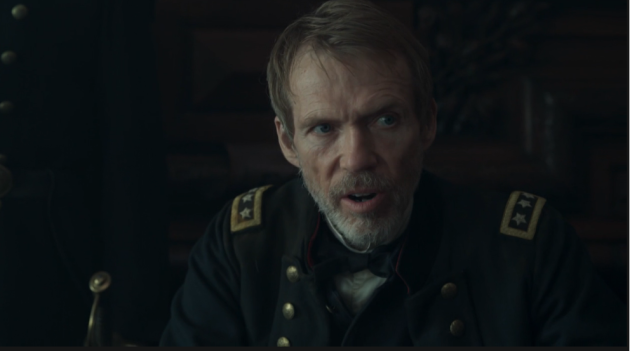
The General who spouts 21st Century Rhetoric
Perhaps one of the film’s most haunting layering of past & present is when Peck notes the uncanny similarity between German Concentration Camp photos of piles of discarded shoes, suitcases, personal belongings, to similar photos he took in a church in Ntarama, Rwanda in 2003 after the Rwandan Genocide of the Tutsi at the hands of the Hutu militias. Remarking on how the ‘details’ of genocide are eerily echoed across 60 years of history.
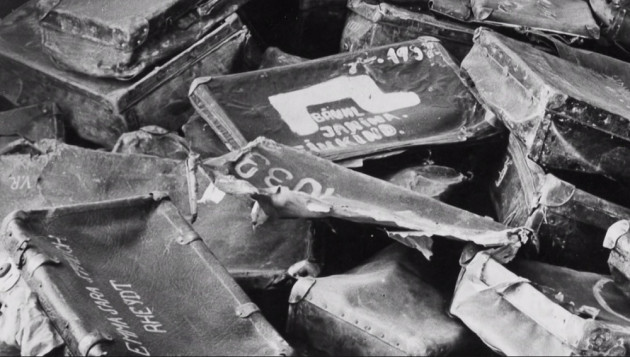
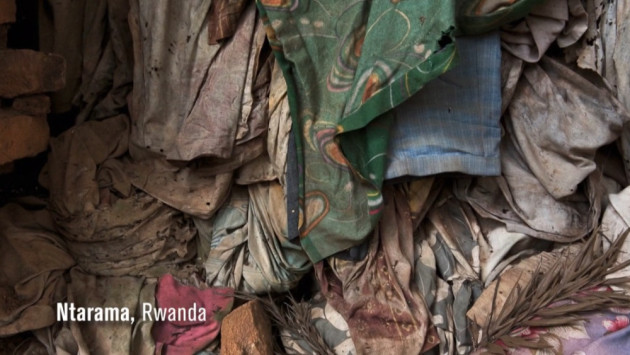
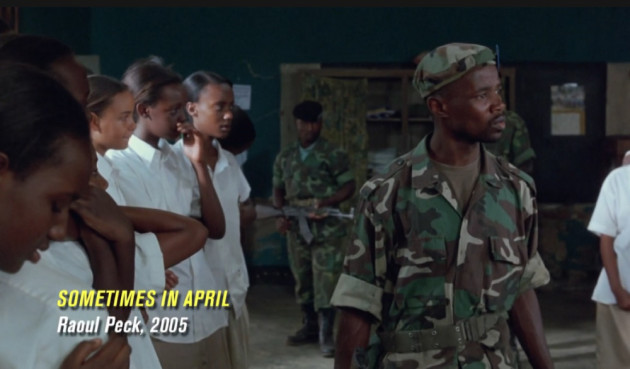
The work of Raoul Peck came to mind when I viewed an NFB documentary that recounts a hidden part of Canadian black history in a small town in Ontario called Priceville, Speakers for the Dead (2000) by black Canadian filmmakers David (Sudz) Sutherland and Jennifer Holness. The film itself proved quite the revelation to residents of Priceville and Canadians in general, so hidden was the reality of racism in that community, and the role of slavery in Canada in general. 1 The official history of Priceville states the Scottish and Irish as the first non-Native settlers. But as a recent CBC radio piece noted, “Ontario’s Priceville was a small, thriving Black community — until it wasn’t.” (Adrian Harwood) Against the official history, the area was first settled by black communities in the 1830s. The people who fought in the war of 1812 on the side of the Crown (United Kingdom and its allies in British North America, against the United States and Indigenous allies) were promised but never given land in an areas to be known as Priceville.
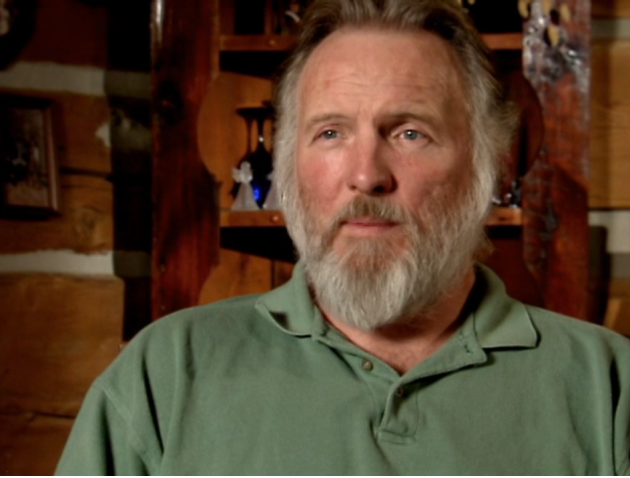
Les MacKinnon, a man who would not keep silent
“Some of their family ties are in Priceville, a village of 200 people located on Saugeen Ojibway territory about 60 kilometres southwest of Collingwood, in Grey County. In the 1850s, Priceville was home to a vibrant Black community, but it had all but disappeared by the 1880s. Then, decades later, its Black cemetery was desecrated and its Black history receded farther into the past, forgotten and unacknowledged” (Adrian Harewood).
Speaking for the Dead discusses the issues of historical neglect by focusing on a Black only cemetery where black citizens were buried. The erasure of local (rural Ontario, the second largest Province in Canada, first in population) history is a common thread in all colonial and imperialist Nations, which Raoul Peck’s film Exterminate all the Brutes, expands into a consideration of the same type of historical erasure across the world.
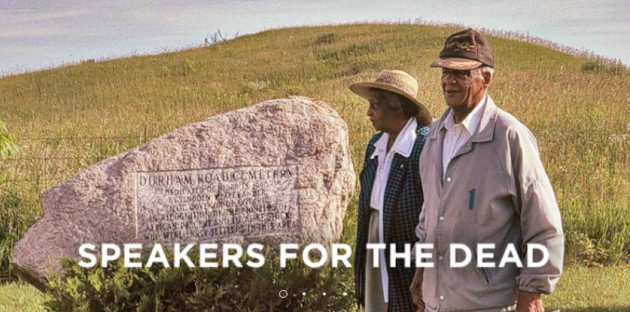
Helen & Allan Miller, Seventh-generation Black Canadians and members of the cemetery restoration committee.
In Speaking for the Dead we see archival footage from the 60s or 70s of dedicated members of the Priceville community finding in a field of rubble pieces of a headstone which signaled two generations of black families, Chauncey Simmons with his wife and son, dated May 1854. This was the proof needed to ‘uncover’ this missing part of Priceville local history which overlooks the contributions of Black Canadians as Canadian pioneers. The cemetery (in theory only since it has been covered and built over) is now called Pioneer Cemetery. In the case of the Priceville black cemetery what is hidden is also the mixed race heritage of many of the white residents of Priceville, who either consciously or not, were denying their mixed heritage, which led to the issue of passing which became a common strategy for residents of a certain generation in Priceville. “But what had been a thriving Black community in the 1850s — full of hope and possibility — was essentially gone by the 1880s. And by the 1930s, any visible trace of a vibrant Black presence in Priceville had been literally plowed over” (Adrian Harewood).
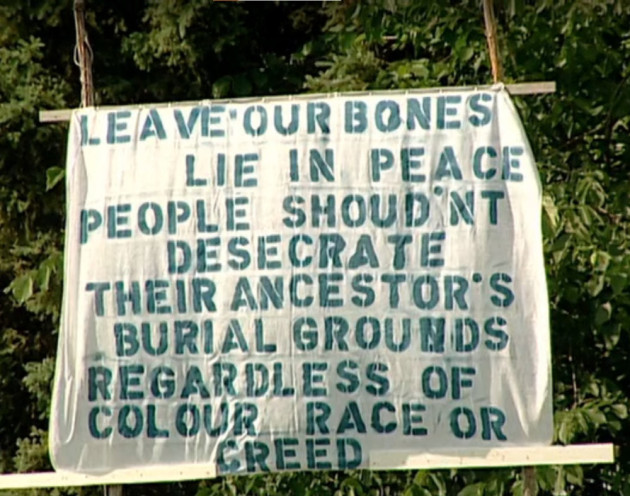
Similar issues are on current display in Canada, where a court ruling decided that the province of Ontario and the Federal government were not responsible for compensation of billions of dollars in lost revenue the Indigenous communities suffered by the natural resources taken from their lands. The government’s defense lawyer argued that the huge costs incurred in cultivating the natural resources cuts down the profits: “mining research, reforestation, insect control, forest fire management, surveys, land agents” in addition to the “expenses in connection with colonization roads and railways” as examples of the money spent by the province, adding that at most, the government would owe the Anishinaabe people C$34m” (The Guardian).
The amount of research that went into the documentary Exterminate all the Brutes is staggering. Peck convinces with an onslaught of facts, animated charts, academic research, historical evidence and his own lived experience as member of an educated family who experienced first-hand political turmoil in his natal country Haiti, where they fled the Duvalier dictatorship to the Congo. Raoul Peck along with his parents all held political positions in Haiti and the Democratic Republic of Congo. Peck was educated in Germany and France. Interspersed throughout the documentary Peck talks about his life-long commitment to studying racial and cultural genocide, including the many years he lived in Frankfurt Germany and researched concentration camps. No stones are left unturned as Peck examines all the different ways in which power and propaganda have informed the growth or continuity of racism, xenophobia and Western notions of cultural superiority over Non-Western Nations (whose attitude of superiority Peck mocks when he refers to his own birthplace as “that shithole country”). From science (eugenics), to art (propaganda), to technology (cotton gin, military strategy), to social history (manifest destiny), to industry, Peck paints an overwhelmingly wide vista on which to hang the tentacles of Western colonialism and imperialism.
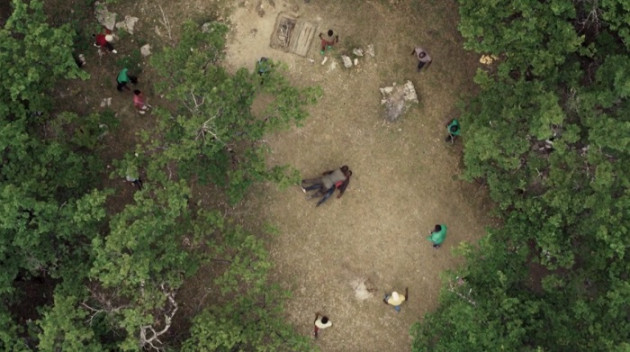
Hartnett’s ‘white’ nightmare: being surrounded by avenging slaves
Exterminate all the Brutes is staggering. Staggering in its intellectual scope, vision, intelligence, and force of conviction (both conceptually and aesthetically). So convincing in its depiction of how ugly and destructive humanity can be, that the end leaves the viewer drained of emotion, if not also hope. Throughout the four hour examination of what in essence is world Nation building Peck sometimes tries to understand the “why” behind centuries of colonization, extermination, and purification, all in the name of “civilization”. Why the repeating horrors of genocide? “To the victor go the spoils” seems the rationale but this is an answer which does not satisfy intellectually or morally. Perhaps the reason lies in the concept of evil defined as an action which “defies explanation or is incomprehensible” (Stanford Encyclopedia of Philosophy). Peck gives a final sobering thought that hangs in the air like a heavy fog during the film’s final shot, a fluid two minute drone shot over the misty fields of a former concentration camp in Auschwitz II, Birkenau: “No. It’s not knowledge we lack.”

Auschwitz II, Birkenau
Speaking for the Dead can be screened for free at the NFB website: https://www.nfb.ca/film/speakers-for-the-dead/
Bibliography
Adrian Harewood, CBC Ideas. Feb. 20, 2022. https://www.cbc.ca/radio/ideas/priceville-ontario-black-history-1.6333960
Guardian, The https://www.theguardian.com/world/2023/feb/03/ontario-colonization-costs-billions-first-nations-treaty
Matthw McCrae. “The History of Slavery in Canada.” Canadian Museum for Human Rights. https://humanrights.ca/story/story-slavery-canadian-history
Stanford Encyclopedia of Philosophy https://plato.stanford.edu/entries/concept-evil/
Notes
- For more information on how slavery in Canada differed from the narrative of slavery in the United States, I refer you to the article “The History of Slavery in Canada.” ↩





